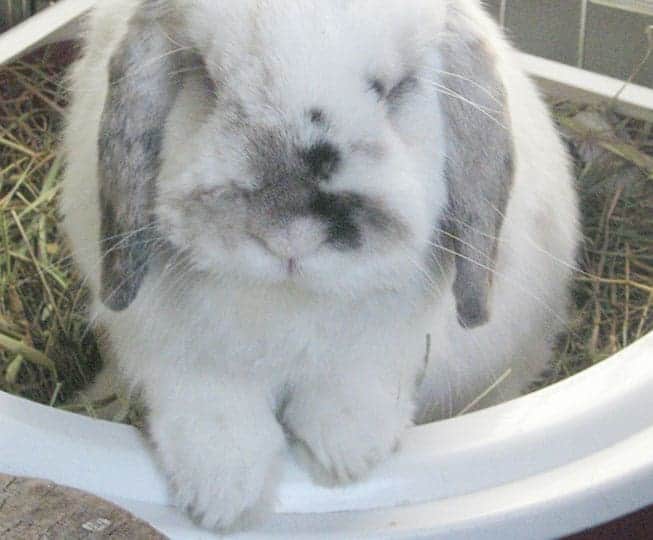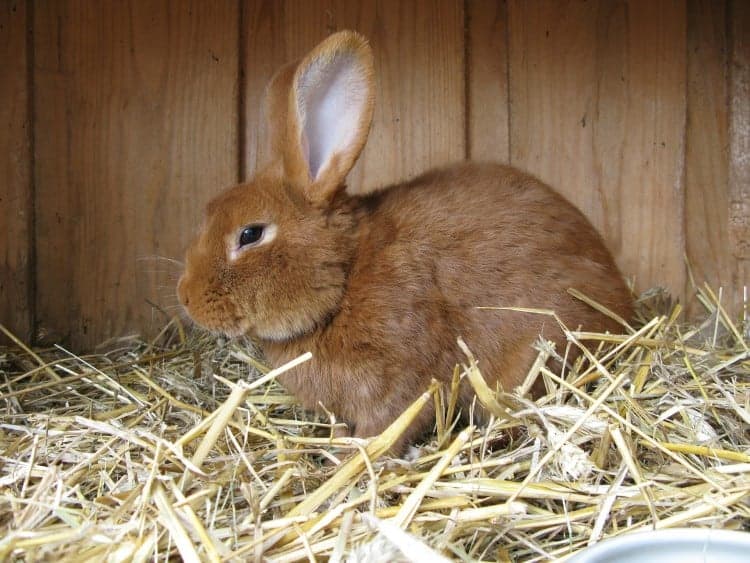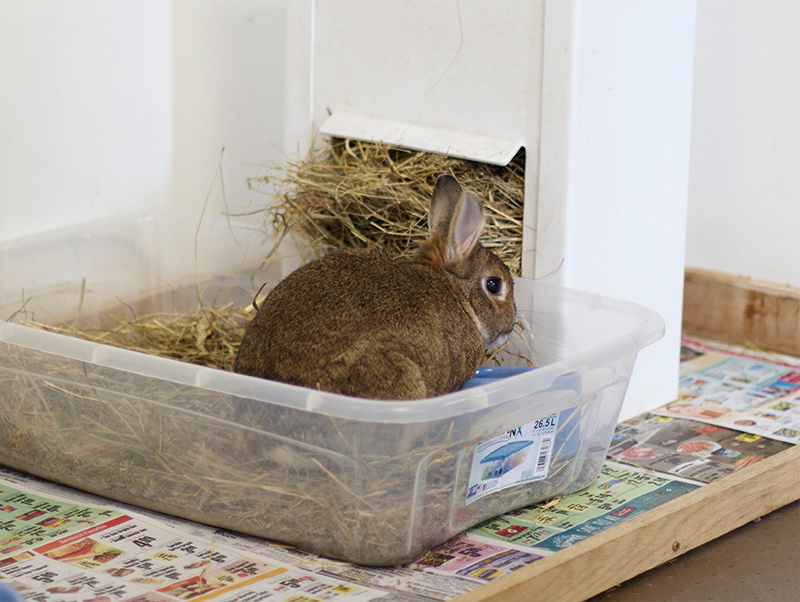Info Guides, Rabbits
How Often to Clean Rabbit Litter Boxes
Cleaning out your rabbit’s cage is probably the least exciting part of owning a pet. But it is necessary to keep your pet happy and healthy.
You are responsible for your rabbit and it relies on you solely for cleaning and looking after its every need. You should always include a litter box inside your rabbit’s hutch. Rabbits are naturally very clean.
They will instinctively want to go to the toilet in the same corner every time, out of the way. This is great as it keeps the majority of the hutch nice and clean!
By putting a litter box in this toilet corner, it makes cleaning time much easier for you as an owner. Rather than scooping out the poop and soiled hay from the floor, simply pick up the litter tray and clean it out.
But how often should you be cleaning out a rabbit litter box? Once a week? Daily? Great question! But there are a few other things to consider first…
Litter Boxes
You can purchase litter boxes from pet supply stores, either online or in a local shop.
Consider the size. The tray should be double the size of your rabbit, so it has room to get comfortable. If you have multiple rabbits, there needs to be room for them to be inside the tray all at the same time.
Litter boxes sold for rabbits are often very tiny and don’t allow your rabbits enough space to stretch out. This may discourage them from using it.
It may be wiser to shop for a cat litter box as it will be larger. However, make sure it has low sides so your rabbit will be able to hop into it without any trouble.
Also make sure your hutch is large enough to fit the litter box in an enclosed area without taking up the entire space. Don’t place the litter box in an open run area as it may get rained on.
If you have a large cage with multiple rabbits, consider getting multiple litter boxes.
Most litter boxes are a shallow tray with low sides. Some designs will have higher side walls or a closed top. This can be good if your rabbit likes to flick litter out of the box or spray urine over the side of the tray.
You don’t have to buy a specially designed litter box. Some owners also use shallow baking pans or plastic storage tubs instead. As long as they are a similar shape, they will work!
It is best to use a litter box made from plastic, as it is durable and easy to wash. Using a metal litter box is not recommended as it may overheat in summer time and burn your bunny.
The Best Litter to Use
You will need to put some sort of bedding into the litter box. This absorbs all the mess and helps with smells. Plus it will make it comfier for your rabbit to stand on.
Choose a litter that is non toxic in case your rabbits decide to chew on it. Avoid scented litters sold in pet stores. These usually don’t make cages smell any better once your rabbit poops on it and are overpriced.
You will only need a thin layer of litter as bunnies don’t bury their poop. If you use organic or paper based litter, you can add the soiled bedding and hay into your backyard compost pile or your green waste bin.
Litter options include:

Litter Boxes need some bedding
You will need to put some sort of bedding into the litter box
Newspaper
Newspaper as a good option as you can obtain it for free and it will naturally break down in your green waste bin. It makes great compost! However, it does not absorb much liquid so you will need to use a thick layer and change it more regularly.
Shredded Paper
Using shredded paper is free and a great way to recycle. But it is not very absorbent so use a thick layer and change it often.
Wood Shavings
Wood shavings can be purchased from a pet store. Choose a pack with dust extracted as wood dust can lead to respiratory issues for your bunny.
Wood shavings are highly absorbent so help with bad odours and can usually be changed just once per week. However, they can be quite expensive.
Paper Litter
This refers to commercially sold litter that is made from recycled paper. They can come in either pulp fibers or in harder, compact pellets.
Both the fibers and pellets are dust free and don’t stick to your rabbit’s fur. They are highly absorbent and can often be changed just once per week. But they can be expensive.
Wood Pellets
Wood pellets are made from compact wood fibers compressed into pellets. They are highly absorbent so won’t need to be changed too often and they are dust free.
However, the pellets can be difficult to find in an Australian pet store and are therefore quite expensive.
Cleaning the Litter Box
How to Clean a Litter Box
Wondering how to clean the litter box? First step is to simply dump the soiled litter into the bin. Use a dry brush to remove any bits that are stuck to the side of the litter box.
You will then need to give it a good clean. An easy way is to use your garden hose. Stand on the grass outside, turn the nozzle on to a strong setting and blast the tray clean. Alternatively, you could scrub it clean in the sink using a sponge.
Every few cleans, we recommend you soak the rabbit litter box in hot water for a few hours. This soak should help to remove any tiny bits of soiled litter that are stuck. Then dry the tray. If you can, leave it to dry in the sun as this can help to kill any lingering bacteria. Otherwise, wipe thoroughly with a towel.
You guys may already do the same thing with your cat’s litter box.
Cleaning Tips
No matter how well litter trained your rabbit is, there will always be some accidents in the wrong places. Poo or rabbit litter may get flung out of the tray by accident or they may urinate over the edge of the tray.
Use a scoop to pick up any stray poos and wipe urine up from underneath the tray using paper towels. It is a good idea to have a spare litter box. If you have multiple boxes then when you take one out to clean or soak, you can instantly pop the spare fresh litter box in.
This gives you more time to thoroughly clean, soak and dry the first litter box without making your rabbit go without.

Keeping it clean
Keeping the rabbit litter box clean will help to keep your rabbit comfortable
Regularly inspect the litter box for damage. A cracked plastic tray could have a sharp edge and possibly injure your rabbit. Your bunny may also chew on the edges of the tray. If it chews too much, you may need to remove the litter box and use something stronger.
Sometimes a rabbit may not want to use the litter box if it is perfectly clean. This is especially the case with male bunnies who mark their scent onto the litter box.
If you clean the litter box thoroughly and then notice your rabbit is suddenly going to the toilet in other areas of the cage, you may need to leave a small amount of poo behind after you clean it (rather than emptying the whole thing).
Why it is Important to Keep Clean
Comfort
Keeping the rabbit litter box clean will help to keep your rabbit comfortable. Rabbits are naturally very clean and will be much happier without any mess in their cage.
A dirty litter box will smell bad and make being near the cage unpleasant for you and anyone who visits your home. If their litter box gets too full, a rabbit may not want to get into it and may then start to poop in other areas of the cage (which isn’t ideal).
Health Issues
A clean litter box will also keep your bunny healthy. Rabbit poop can attract unwanted pests such as mites and flies. A mite infection can leave your rabbit itchy, irritated and suffering hair loss.
Flies can result in fly strike which can be fatal. A dirty enclosure can also lead to respiratory issues, bacterial infections and mold.
How Often to Clean the Litter Box
So now the big question! How often should you clean out your rabbit’s litter box? Your bunny’s litter box will need to be cleaned every 1-7 days. This can vary depending on a few different factors…
Type of Litter
Paper based bedding (such as newspaper or shredded paper) will be less absorbent and therefore will need to be changed more often. More absorbent bedding (such as wood shavings) will last longer.
How Many Rabbits
If you have more than one rabbit, you will need to clean the rabbit litter box more often. As a general rule – the more bunnies you have, the more poo they will produce and the more regularly you will need to clean their litter box.
Size of the Rabbits
Larger rabbit breeds will eat more and therefore go to the toilet more often. It is normal that owners of larger rabbits will need to clean the litter box more regularly.
Number of Litter Boxes
If you have two litter boxes (or more) in their hutch then you may not need to dump your rabbit’s litter as often.
Smell
While it is good to develop a routine of how often you clean the litter box out, factors will change and sometimes you may need to clean it more or less often. Regularly check the litter box to see how it is going.
It is a good idea to check your rabbit’s litter box each morning when you are feeding your bun and refilling its water bottle. A lot of rabbit owners use the ‘nose rule’. If it smells bad, it is time to clean the litter box!
Sickness
If your rabbit is unwell and has diarrhea, the litter box may need to be cleaned out more than once per day. If this happens, always contact your local vet for advice on how to help your bunny feel better.
Spot Cleaning
Whether you choose to clean the litter boxes daily or once per week, you will need to spot clean the rest of the hutch each morning. Even the best litter trained rabbits will occasionally have accidents throughout the hutch. Open the cage door, check for any accidents then use a scoop to clean them up.
Litter Box Training
How to Litter Box Train a Rabbit
Unlike guinea pigs, rabbits will naturally want to go to the toilet in the same spot. This makes litter box training possible. See where your bunny is regularly pooing. This is usually in one or two corners of their hutch. Place a litter pan in this spot.
Put a little bit of poo in the tray to help them realise that is where they should go. While you are still training, don’t clean out any poo instantly or your rabbit may worry that isn’t where it was supposed to go. Leave the poo in there for a day or two.
Bunnies usually eat while they poo so it is recommended you place their hay next to the litter box. You want your bunny to be able to sit inside the box while eating the fresh hay.
But you will also need to mount the hay in a hay rack so it doesn’t fall into the box and become soiled. If you do get some soiled hay, remove it as soon as possible.
When your rabbit uses the litter box, use positive reinforcement to reward it with a treat such as its favourite hay or veggies. Never punish your rabbit for doing the wrong thing – this will only scare your rabbit and won’t help to teach it. If it goes in the wrong place, simply pick the poo up and put it into the litter box.
Watch your rabbit. If it shows signs of needing to go to the toilet, pick it up gently and put it into the litter box. Signs include backing up or wiggling its bottom.
Training Your Rabbit
Unlike guinea pigs, rabbits will naturally want to go to the toilet in the same spot
Always be patient. Learning a new skill will take your rabbit time. During training, you will need to spend a lot of time with your rabbit. This is a great opportunity to bond with your bunny!
Once your bunny has mastered litter training within its hutch, you can try letting it out inside your house. Start with a small fenced off area. The Arena playpen is a great way to block off space so you can control where your bunny goes.
Expand the area gradually once you are confident your bunny has worked out litter training within this space. If it is a very large area, consider using multiple litter pans so your bunny doesn’t have to travel too far to use the toilet.
If your rabbit has an accident in your house, clean it up instantly using white vinegar. White vinegar works great to both disinfect the area and to help with odor control for rabbit urine.
If it keeps going to the toilet in that spot, consider putting a litter pan there (even if it means rearranging your space).
Training Tips
Even the best litter trained rabbits will still have an accident here or there. However, some rabbits may start to forget their litter training and may need to be retrained every few years.
If you have multiple rabbits, this can sometimes make things easier. If one rabbit is well litter trained, it will often teach the others what to do. Rabbits that are older usually litter train easier as they are naturally cleaner and able to learn faster.
Desexed rabbits will also litter train easier. Rabbits that aren’t desexed will naturally want to mark their territory by going to the toilet in different areas of their hutch. Desex your bunny early on to help prevent it from getting into the habit of marking its territory.
References
www.rabbitholehay.com/blogs/rabbit-hole-hay-blog/how-often-should-i-clean-my-rabbits-litter-box
www.omlet.co.uk/guide/rabbits/rabbit_hutches/litter_box_cleaning/
be.chewy.com/tips-for-cleaning-your-rabbits-litter-box/




